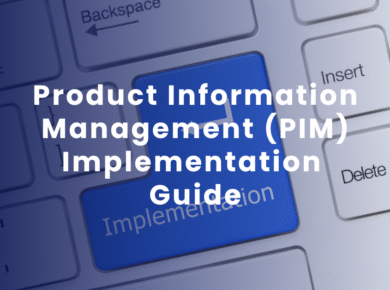How Will GenAI Redefine the Hybrid Shopper Experience? Read Blog Holiday shopping
The Rise of Social Commerce and Its Impact on Customer Buying Journeys
In a world where consumers scroll before they search, social media is no longer just an awareness or branding tool, it has become a powerful sales engine. From impulse purchases on Instagram to live-stream shopping on TikTok, the shopping journey has moved closer to where customers already spend their time. This seismic shift, known as social commerce, is redefining how brands connect with consumers—and putting new pressures on how businesses manage and deliver product information.
Welcome to the era where every swipe, tap, and share could be a conversion. But to truly succeed in this fast-moving, content-driven ecosystem, brands need more than just a social media presence, they need the right digital infrastructure behind the scenes. That’s where Product Information Management (PIM) enters the spotlight.
What Is Social Commerce?
Social commerce refers to the use of social media platforms to directly promote and sell products or services. Unlike traditional eCommerce, where consumers are redirected to external sites, social commerce enables in-app transactions, reducing friction and improving conversion rates.
According to a recent Statista report, global social commerce sales reached $724 billion in 2022, and they’re projected to surpass $1.2 trillion by 2025. Platforms like Instagram, TikTok, Pinterest, and Facebook are rolling out shopping features, storefronts, and live-stream shopping capabilities at a rapid pace. Even YouTube is joining the fray with integrated product tagging and in-video shopping links.
This transformation is particularly resonant among younger audiences:
- 71% of Gen Z consumers say they discover products on social media before any other channel.
- 59% of millennials have purchased directly through a social platform at least once.
(Source: eMarketer, 2023)
The Opportunity and the Complexity
The appeal of social commerce is obvious: it meets consumers where they are, combines content and commerce seamlessly, and reduces steps in the buyer journey. But with that opportunity comes complexity.
Unlike traditional eCommerce, which often runs through a single storefront or marketplace, social commerce spans multiple channels, each with its own formats, guidelines, algorithms, and audience behaviors.
Some of the major challenges brands face include:
- Maintaining accurate and consistent product data across multiple social platforms
- Adapting content for visual-first formats like Reels, Shorts, Stories, and Lives
- Delivering real-time updates for prices, availability, and promotions
- Managing high-frequency content changes and campaign launches
Traditional systems weren’t built for this pace and scale. That’s why businesses looking to thrive in the social commerce landscape need a smarter approach to product data.
Why PIM Is Essential for Social Commerce Success?
1. Centralized Product Data Across All Channels
PIM serves as the single source of truth for all your product data—descriptions, SKUs, images, technical specs, pricing, localized content, and more. In a social commerce environment, this centralization ensures that every product listing, whether on Instagram Shop or TikTok Store, is consistent and accurate.
No more worrying about outdated specs or conflicting descriptions. A PIM system keeps your product information synchronized across every social and commerce touchpoint.
2. Content Personalization at Scale
Social commerce thrives on personalization—local languages, seasonal themes, influencer-driven campaigns, and even UGC-driven product pages. PIM allows brands to tailor product data for specific markets, personas, and campaigns without manual effort.
You can easily push variant-rich content for different audiences, manage A/B-tested content for ads, or localize product stories for different geographies—all from one unified platform.
3. Faster Time-to-Market for Campaigns
In social commerce, timing is everything. Whether it’s a trending TikTok sound, a viral moment, or a flash sale event, brands need to move fast. PIM enables marketing and product teams to collaborate, enrich, and publish campaign-specific product content in real time.
This agility ensures that brands don’t miss their window of relevance—and it also reduces the operational load typically associated with campaign rollouts.
4. Omnichannel Automation and Integrations
Modern PIM solutions integrate with social media APIs, feed management tools, CMS platforms, DAM systems, and ERP software. This allows for automated publishing of enriched product content to Facebook Catalogs, Pinterest Product Pins, Snapchat Ads, and Instagram Shop, among others.
In practice, this means your team can launch a new product or promotion and have it appear simultaneously across Shopify, Instagram, Amazon, and more—with minimal effort and no data mismatches.
5. Real-Time Accuracy in a Dynamic Environment
Social platforms are dynamic, algorithm-driven ecosystems. A product that goes viral may sell out within hours. Without real-time updates, brands risk frustrating customers with incorrect prices, unavailable SKUs, or outdated descriptions.
By integrating PIM with backend systems like ERP or inventory management, you ensure that every product listing reflects up-to-the-minute stock levels, discounts, and product changes—a crucial feature in time-sensitive social commerce settings.
The Bigger Picture: Social Commerce Is the Future—And PIM Is the Foundation
Social commerce isn’t a side-channel or experimental trend anymore. It’s quickly becoming a core driver of digital revenue, especially for consumer brands. But to make the most of this opportunity, businesses need more than reactive social media strategies—they need a robust product data backbone that can scale with content, speed, and personalization.
That’s what PIM delivers. Whether you’re preparing for a global TikTok campaign, building immersive Instagram shopping experiences, or empowering influencers to co-create content with embedded product tags, a modern PIM system ensures that your product information is always ready, relevant, and reliable.
Final Thoughts
The shopping journey no longer begins with a search engine. It starts on a scroll, a story, or a live stream. To win in this new era of social-first commerce, brands must invest in tools that combine structure with agility.
A well-implemented PIM strategy doesn’t just support social commerce—it accelerates it.
Explore how a future-ready PIM system can transform your social commerce strategy. Connect with our experts to learn more.
Latest Resources
How Unified Data Can Keep You Ahead This Holiday Read Blog As
Enterprise Data Management in Transition: 2026 Trends and AI-Driven Shifts Read Blog
Unlocking Growth: Why PIM DAM Integration Is a Strategic Imperative Read Blog
Mastering Product Data Syndication: A Business-Centric Approach Read Blog Why Accurate Product
The Hidden Costs of Missing Metadata in Digital Asset Management Read Blog
Key Takeaways: Identify the Right Time for PIM: Gain clarity on identifying
PIM vs MDM: What’s the Difference and When to Use Each? Read
Questions to Ask When Choosing a PIM Vendor? - Part 2 Read
Questions to Ask When Choosing a PIM Vendor? - Part 1 Read









